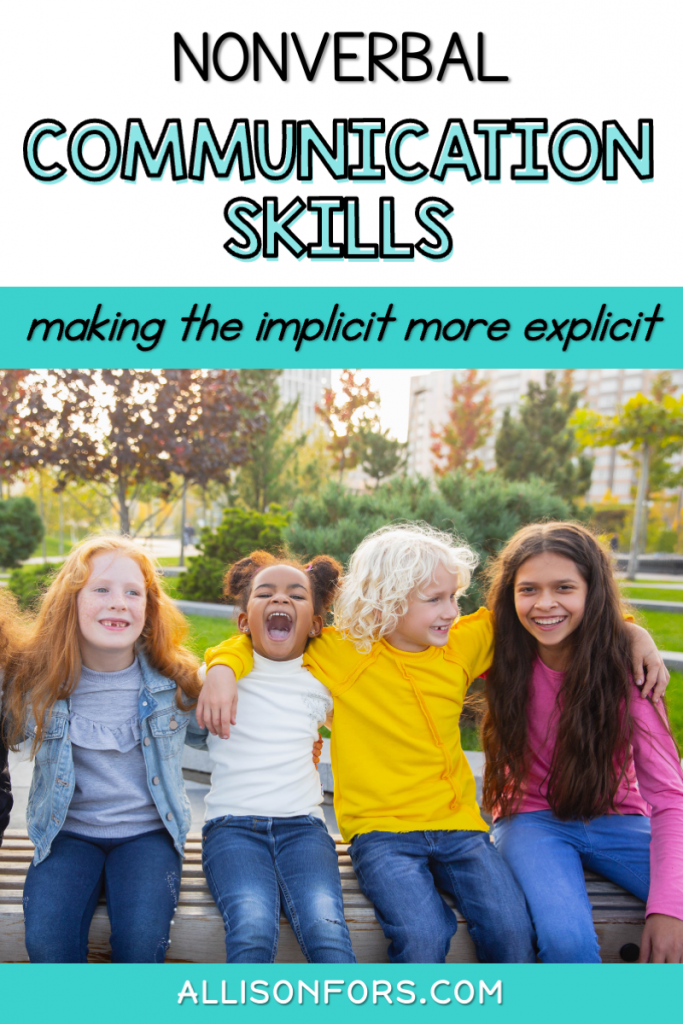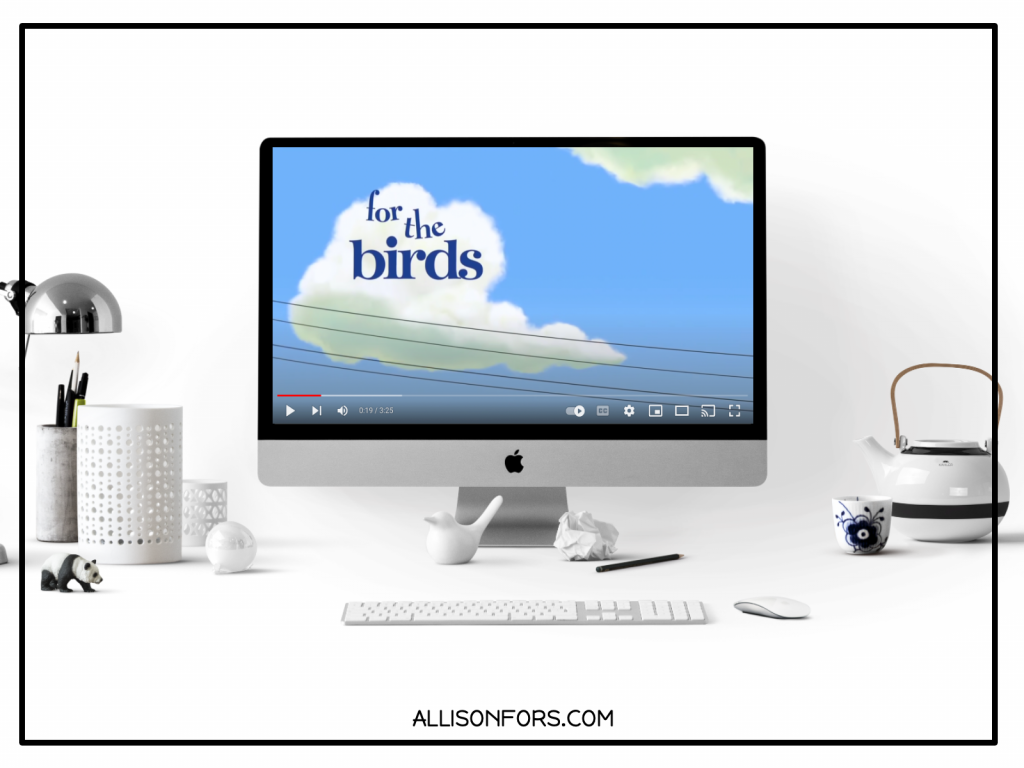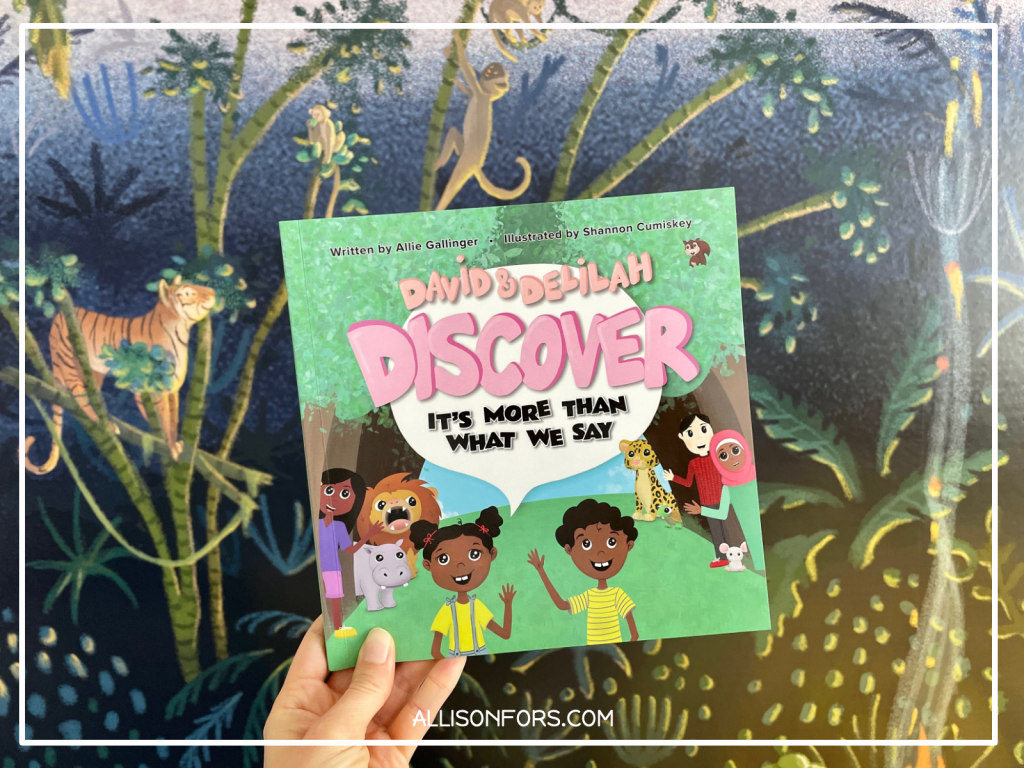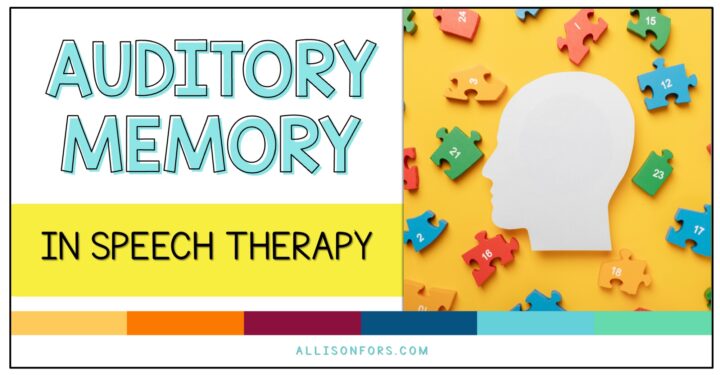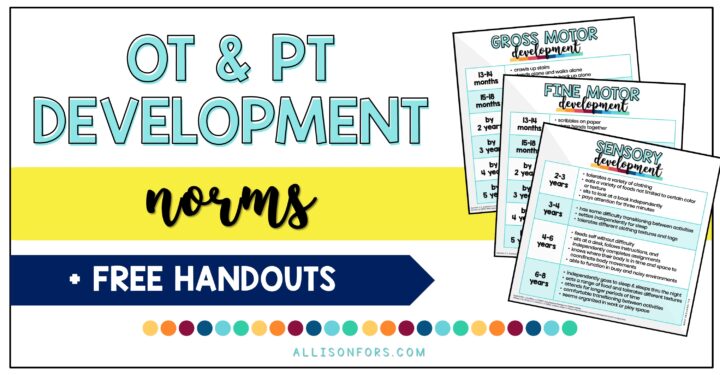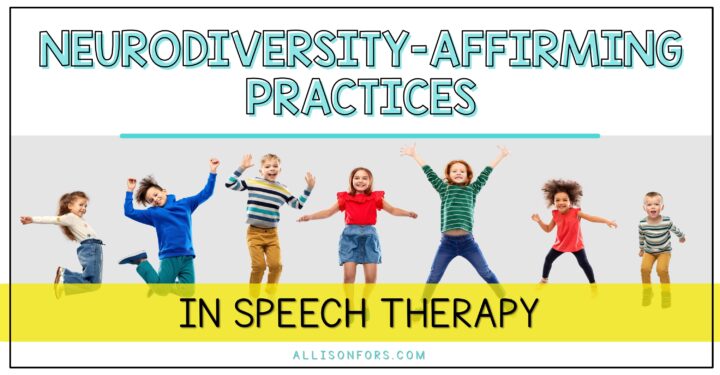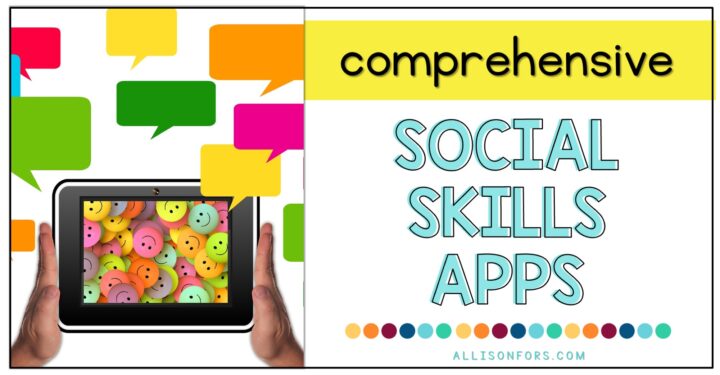
Nonverbal Communication Skills: Making The Implicit More Explicit
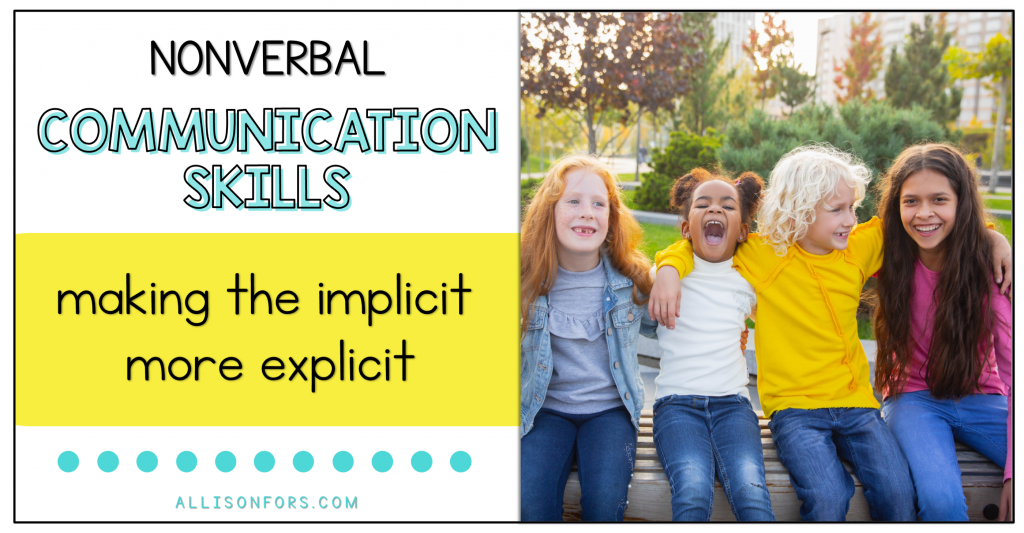
Welcome and thanks to my guest blogger, Allie Gallinger! Today she is sharing how she works on nonverbal communication skills in speech therapy.
When I was studying in the speech language pathology program, we were never explicitly taught how to help children with their social communication skills. Instead, it was an area that I have learned about through other SLP resources online, from my SLP peers and simply from working with children who have difficulties in this area. While all of my clients are vastly different with varying needs and goals, I do find that many of them have difficulty understanding nonverbal communication cues in others and also understanding the impact of their own nonverbal communication cues.
Have you ever had clients who present with the following challenges?
- Not realizing that their communication partner is bored or uninterested in conversation when their communication partner is staring off into space, tapping their foot or not even responding
- Using a very loud voice in situations where a loud voice is not needed
- Saying “sorry” to peers with a sarcastic tone of voice
- Not facing their communication partner in conversation
- Not noticing that a caregiver is starting to get frustrated when their eyebrows start to furrow and their fists start to clench
This by no means an exhaustive list. These challenges are seemingly endless and all of them are related to the subtle nonverbal cues of facial expression, body language and tone of voice. While I never want a child to feel that they have to mask themselves to try to fit in, I do want them to be able to have successful peer relationships and a lot of that is based on the ability to understand these more nuanced cues.
I like to teach these areas as three separate skills and then put them all together. Here are some therapy ideas for targeting nonverbal communication.
Direct Instruction
I always start with direct instruction when teaching nonverbal communication. I will pick a very simple sentence like “Allie, come here” and say it in a few different ways while changing my tone of voice. Children are able to see how the same sentence means something completely different with different tones such as loud vs. quiet or fast vs. slow.
Then, I will say nothing and change how my face looks (e.g. furrowed eyebrows, small smile, big smile etc.) and ask children to guess my emotion without me saying a word.
Finally, I will do the same with my body (e.g., clench fists, jump up and down, slouch forward). This introduction is a great starting point for discussion around nonverbal communication.
Videos
When showing videos, there are two goals. First, I want to show children that you can glean so much information from videos that don’t even have words such as For The Birds. The facial expression and body language of the characters in this silent video provide a ton of information on characters’ thoughts and feelings. Second, I want to watch videos and interpret how the person feels and how other people in the video feel. We talk about whether the tone of voice, facial expression and body language were helpful or not helpful for the situation and what could be done differently if not helpful. You can check out a blog post here on more videos for nonverbal communication.
Books
Any book can be used to talk about nonverbal communication skills but I really like books that focus on specific emotions. For example, I often use the book When Sophie Gets Really Really Angry because there are many excellent examples of an angry tone of voice, face and body that can be broken down and analyzed.
When working with my clients on these skills, I realized that there were few if any books specifically on the topic of nonverbal communication skills so I decided to write my own children’s book. In David and Delilah Discover: It’s More Than What We Say, Delilah teaches her twin brother David all about recognizing tone of voice, facial expression and body language and how his nonverbal communication cues impact others. It is a three part book that separates each skill into its own individual story.
There are so many ways to help our clients feel more confident in social interactions with peers and others in their lives. If I can help my client gain confidence in this area by helping them to better understand the subtle cues of nonverbal communication, then I feel I have done my job well.
Author Bio
Allie Gallinger is a speech-language pathologist practicing in Toronto, Ontario, Canada. She works with children and adolescents in the areas of stuttering, articulation disorders, motor speech disorders, late talkers, and expressive and receptive delays. Allie has a special interest in social communication skills and helping children to develop their social emotional skills in her private practice.
Are you interested in being a guest blogger? Fill out this form!
